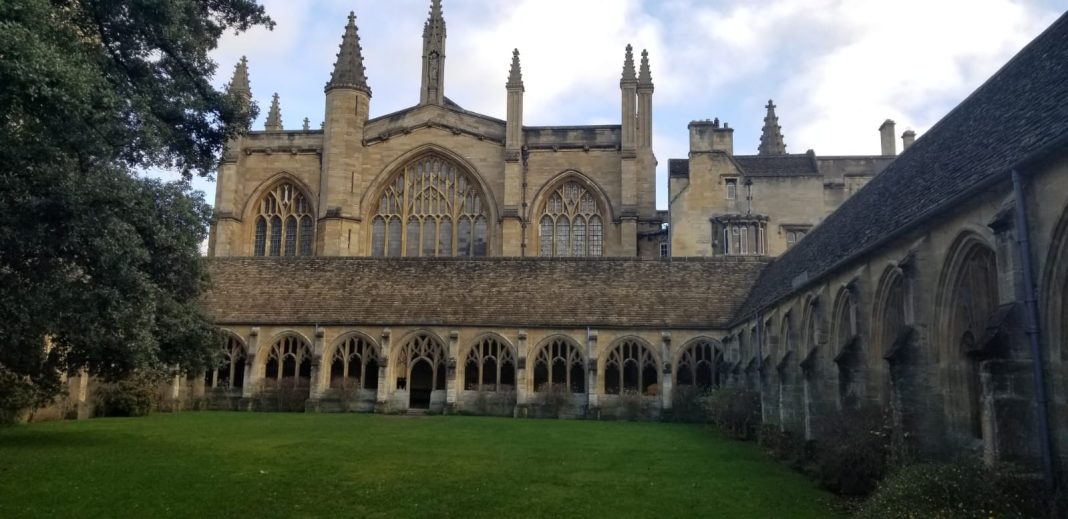As a proud member of one of Oxford’s younger colleges – one that didn’t make it into the set of Saltburn – the magnetic pull of the old Oxford cloisters appeared alive and well when overhearing an incoming fresher express disappointment about not being pooled to one of the “fancy old colleges.” They imagined the Oxford of postcards and films: cloisters, gargoyles, and stained-glass chapels. St Peter’s College may not frequently appear on corner shop merch, but its campus, nestled near Oxford Castle and St George’s Tower (the oldest surviving structure in the city), is home to an eclectic blend of Georgian architecture and 20th-century additions.
Despite my collegiate bias, the city I call home for half of the year is nothing short of stunning. With its alluring architecture embedded within the stone of its old colleges and libraries, the kind that turns gold when touched by the sun and (unfortunately) slows the packs of tourists who flood Broad Street on a weekend. Colleges, whose stone is home to the footsteps of writers, prime ministers, and other ghosts of Oxfords’ past, form an iconic backdrop to the city, no matter which college crest you wear on your puffer.
The city’s architecture adds an intangible richness to everyday life for students. A mental health walk across Christ Church Meadows, with the spires piercing the treeline in the distance, becomes endeared with a touch of romance that reminds you how lucky you are to be surrounded by buildings older than certain empires. There is a quiet romance in passing through archways that have stood for centuries or writing essays in rooms older than most modern nations. It is in these spaces that history embraces you.
Yet Oxford is not static. Modern architecture is gradually asserting itself on the peripheries of its medieval core. Contemporary architecture is steadily making its presence known within the university, dispersing the old stone walls with pockets of white tile. The Blavatnik School of Government embodies transparency and openness with its wide panes of glass and spiral form. At the same time, the boxy buildings of Oxford’s newer colleges take on a more functional and minimalist architectural form to catch up with the modern educational landscape.
However, for all their practicality, these buildings rarely capture the affection reserved for Oxford’s older landmarks. Places like the Radcliffe Camera, functionally impractical, remain one of the most beloved sites in Oxford, an ‘X’ on the map from which the rest of the city orbits. Designed by James Gibbs in a baroque style, it serves as a reminder that between the clinical modernity of the Glink and the domed grace of the Camera is a sense of enduring tradition, which happens to make for a quality photo opportunity on a sunny day.
Many of Oxford’s oldest colleges have married tradition and progress, either through modernised interiors or the addition of a few new buildings around the old architectural spine of the college. Walking through college grounds, one might pass from a 15th-century dining hall into a 21st-century library without leaving the place’s spirit behind.
For students living in less storied accommodations, such as the 20th-century sprawl of the Saints Club, the magic of Oxford is never far away. A stroll through Radcliffe Square, a detour down Ship Street, or an aimless meander along the High Street will bring you face to face with centuries of architectural heritage. The beauty of studying here is that even if your accommodation was built in the 1960s, you’re always just a few steps from a portal to the past.
While newer colleges don’t miss out entirely on the architectural legacy of the city they inhabit, the gravitas etched into the older architecture of Balliol College, Merton College, or University College Oxford, anchors the university’s identity in ways that the modern locations struggle to replicate.
After all, where else can you justify spending £5 on an iced coffee if not beneath the weathered stone of a medieval Pret?


